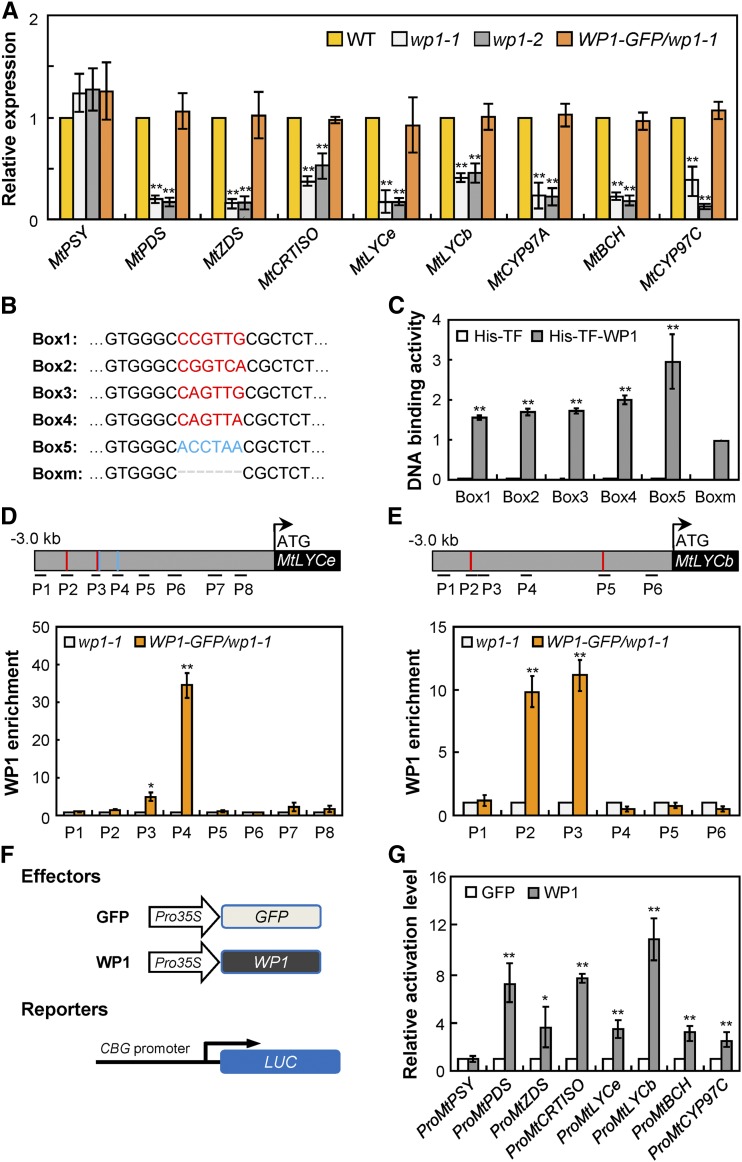Figure 5.
WP1 Directly Activates the Expression of Carotenoid Biosynthesis Genes.
(A) Transcript levels of carotenoid biosynthesis genes in petals of the wild type, wp1-1, wp1-2, and WP1-GFP/wp1-1 revealed by RT-qPCR. Bars represent means ± sd of three biological replicates; asterisks indicate differences from the wild type (**P < 0.01, Student’s t test). WT, wild type.
(B) Putative MYB binding sites in the promoter regions of the carotenoid biosynthesis genes. The red and blue sequences correspond to the MYB-core and AC-rich element, respectively.
(C) DNA binding assay corresponding to the putative binding sites of WP1 shown in (B). The His-TFa protein was used as the negative control. Bars represent means ± sd of three biological replicates; asterisks indicate differences from Boxm (**P < 0.01, Student’s t test).
(D) and (E) ChIP assay showing the association of WP1 with several regions in the promoters of MtLYCe (D) and MtLYCb (E). The regions tested by ChIP assays are indicated in the schematic representation. The putative MYB-core and AC-rich elements are shown by red and blue lines, respectively. MtActin was used for normalization. Bars represent means ± sd of three biological replicates; asterisks indicate differences from wp1-1 (*P < 0.05, **P < 0.01, Student’s t test).
(F) Schematic representation of reporter and effector constructs used in transient expression assay. CBG, carotenoid biosynthesis gene.
(G) Transient expression assay in Arabidopsis protoplasts showing activation of carotenoid biosynthesis genes by the WP1 effector compared with the GFP control. Bars represent means ± sd of three biological replicates; asterisks indicate differences from the GFP control (*P < 0.05, **P < 0.01, Student’s t test).

